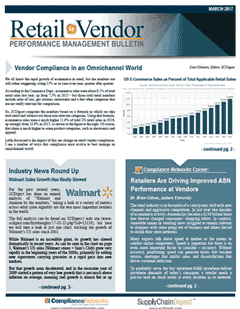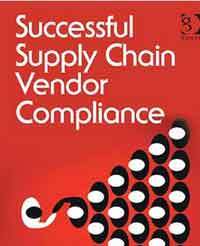 |
April 7, 2017 - Supply Chain Flagship Newsletter |
 |
| FEATURED SPONSOR: LLAMASOFT |
||
Join Industry Leaders, Executives, Analysts and Modelers from Around the Globe at THE ONLY Conference in the World Focused on Supply Chain Design, June 12-16 |
||
 |
|
||||||||||||||||||||||||||||||||||||||||||||||||||||||||||||||||||||||||||||||||||||||||||
|
|||||||||||||||||||||||||||||||||||||||||||||||||||||||||||||||||||||||||||||||||||||||||||
|
|||||||||||||||||||||||||||||||||||||||||||||||||||||||||||||||||||||||||||||||||||||||||||
|
|||||||||||||||||||||||||||||||||||||||||||||||||||||||||||||||||||||||||||||||||||||||||||
|
|
|
YOUR FEEDBACK
We received just a few feedbacks from last week's column on An Inflection Point in Supply Chain Planning? by SCDigest editor Dan Gilmore. But that includes a great response from consultant Dr. Chris Gopal, who thinks Gilmore is spot on.
You'll find his comments as well as a couple of other below.
Feedback on An Inflection Point in Supply Chain Planning?
![]()
Some thoughts on this piece:
Firs, this is an excellent and timely article and one, I think, which deserves to generate a lot of discussion. Given the excitement that is starting to get generated, it would be interesting, at this stage, to see the incremental projected benefits of these next-generation, AI- driven planning systems, relative to their total cost (acquisition, configuration, maintenance, change and implementation - including potential disruption in the "cracks" when one system is pulled out and another put in). I suspect these costs would be significant.
By "incremental" I mean those benefits that would be obtained net of what can be obtained via good business practices and improvements. It would be equally interesting to look at these costs/benefits v. those of the systems that are available today.
I bring up the "change" piece, because it seems that there are a potentially huge number of parameters and variables to consider in today's dynamic S&OP Process (now being called the "SI&OP Process). While these may be completely doable for "straight" processes that are wrinkle-free (third-party fulfillment, simple supply chains with few suppliers, few product variations, high resource-intensive manufacturing where the priority lies in equipment utilization, etc.), it becomes a little more daunting for other, more complex supply chains. Running thousands of scenarios is excellent (and may be required by the complexity of decision making), but at what point do we run into diminishing returns?
Among the factors that need to be considered (at different levels, anyway) are:
Decisions: The typical spectrum of decisions that have to be made includes Placing orders, Quantities, Suppliers/Source selection, Geographies, Manufacturing location/Source selection, Shipping/DC source selection, Shipment dates, Modes, Expediting/De-Expediting/Push-in/Pull-out, Direct to customer/DC, Shifting Customers and Destinations, etc.
Priorities which drive the decisions - Revenue, Margin, Working Capital and Inventory, Product, Customers and segments, Channel, Geography, Product Life Cycle
Trade-offs that must be factored in - functional metrics driven by Sales, Marketing, Finance, Operations
Trust in the system, the algorithms and "intelligence" built into the system (always an issue with executives, particularly when the complexities of the system are difficult to understand).
All these are subject to change (often frequent)- driven by changes in management (different executives have different priorities), economic and customer conditions (what's good today can be bad tomorrow, and vice versa) - and will be different by company and division.
The question: how would self-learning and the new AI-planning systems handle this? This may be a topic for future discussions in the column.
Again, a terrific piece.
Christopher Gopal, PhD
![]()
I think this was a very insightful column and I agree we may be entering a new world or era of supply chain planning based on analytics.
The challenge will be that so many companies are wedded to current planning technology and processes. So making the change to a new analytics-oriented platform will not be easy.
But we have had just incremental progress in planning technology for many years now. The technology you describe will bring step changes and paradigm shifts, and I agree that organization and processes will need to rapidly evolve to meet this "always on" planning environment.
How will that impact Sales & Operations Planning? That is a key question.
Roger Driscoll
Lafayette, IN

![]()
Dan Gilmore wrote: "I was very struck that at several of the case study breakout sessions, companies were simply limited in what they can do in demand and supply planning by a lack of staff. One well-known, global cosmetics firm cannot get to retailer-specific forecasting because it just doesn't have the human bandwidth, for example, a theme that ran through several of the presentations."
I think this company could benefit from Sparkcognition (Austin, TX). Based on what I know (my son works there) they make this easy. For another company they eliminated the need for a ton of people looking at the data.
Thomas A. Moore
Warehouse Optimization
SUPPLY CHAIN TRIVIA ANSWER
Q: How many company members (MHI represents materials handling industry-related hardware, software and a few service firms) does MHI have?
A: About 800, each of which pay an annual fee to MHI; MHI does not have individual memberships, like a CSCMP or WERC.
| © SupplyChainDigest™ 2003-2017. All Rights Reserved. SupplyChainDigest PO Box 714 Springboro, Ohio 45066 |
POWERED BY: XDIMENSION
|










